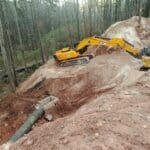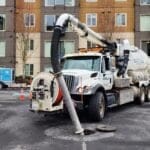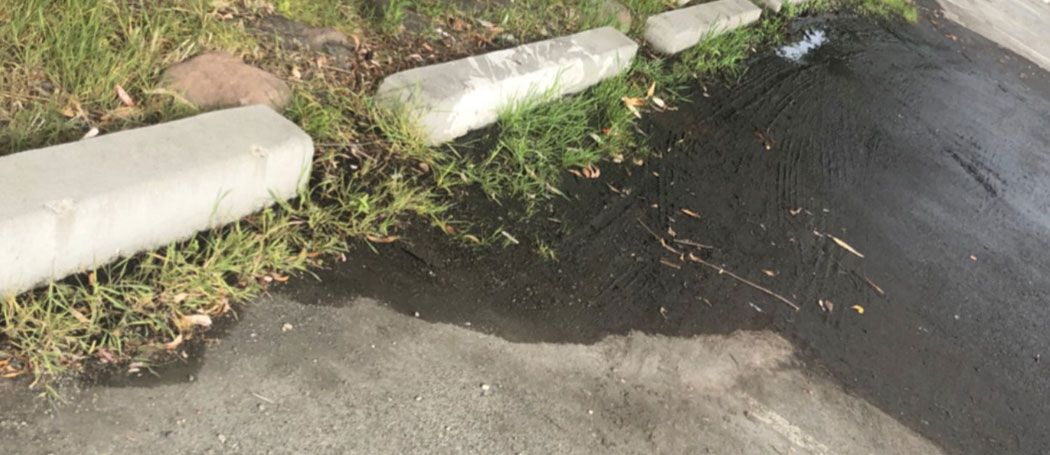Common Stormwater Violations and their Consequences
Getting a notice of violation (NOV) is never a fun experience. Having a violation found during a stormwater inspection means having to shift your focus from your business and spend time, energy, and money on becoming compliant with the relevant stormwater ordinance. You’ll also likely be hit with a hefty fine for being found non-compliant. Having the necessary understanding of your stormwater control measures (SCM’s) and the common violations that can happen with them is important for you to be able to resolve a situation before it becomes a headache.
Utilizing our Laws & Regulations page to find the stormwater ordinances specific to your property is the first step in being proactive about minimizing your frequency of stormwater violations. We have streamlined the messy process of researching laws and regulations for you into a single page that outlines your municipality’s stormwater rules and gives pertinent resources that you may need for applications or to learn more specific information. Being familiar with your property’s stormwater ordinances is important when trying to recognize when something actually is a violation.
The most common violations AQUALIS sees have to do with an inadequate amount of maintenance services. Overgrowth of vegetation, excessive trash, and flooding can affect all types of SCM’s, and are basic maintenance items that, left unchecked, will cause damage to your stormwater assets. They also can act as indicator violations; as more basic maintenance and repairs are being ignored, it is highly likely that larger violations and more difficult repairs are going unseen as well.
Above-ground stormwater assets left uninspected often have an overgrowth of vegetation. Both invasive species and overgrown plants that are part of the design can hinder the efficacy of your SCM. In addition to reducing efficiency, invasive species can be difficult to remove after establishment, and can create environmental liability for you by harming the local flora and fauna within the area. Last year, we inspected and rehabilitated a detention basin that had invasive golden bamboo covering about 30% of the bioifiltration area. Once golden bamboo has invaded an area, it chokes out native plants and expands its area of growth through creeping rootstalks, creating a pervasive and daunting problem even for our experienced professionals. Plants that are part of the design are important to the overall health of the SCM, and thus need to be cut to a specific length required by local regulation or the agreement made when the property was given a permit. The way to look out for an overgrowth of vegetation is to generally keep in mind how your SCM looks when cut correctly, and to take the time to verify that it still looks that way.
On the flip side, having too little vegetation can be just as common of an issue. Inspectors routinely expect 90% vegetation coverage in bioifiltration areas, depending on location. The reason plants are such a vital component of the SCM design is because they are incredibly good erosion controls. Imagine how often the beach, a plant-poor environment, is constantly remodeled by the ocean water. The same undesirable remodeling can happen with an SCM that goes unmaintained. Without routine maintenance services, the designed plants within your SCM can become sparse, dried out, and die, leaving soil exposed to the stormwater flowing through. This can cause erosion, allowing sediment deposits to infiltrate downstream and change the shape and efficacy of your SCM. Not having sufficient plant cover can also reduce the amount of nutrients removed from pollutants in the stormwater, which can create an environmental liability in the form of algae blooms. Paying attention to the overall health of your SCM vegetation and verifying that there is adequate coverage are easy additions to your vegetation checklist.
Excessive trash, including sediment, can affect both above and underground stormwater assets. Blockages are often created by trash, leading to a clogged orifice or reduced infiltration rate of stormwater within your SCM, which can then cause flooding. Sediment deposits can also accumulate in the basin floor of detention and retention basins, decreasing the volume capacity of stormwater that it is designed to hold. Common signs of excessive trash, other than visibly seeing trash in your SCM, includes slow infiltration rates and flooding. It is more difficult to verify that your underground assets, like storm drains, are clear of trash, but the state of your above-ground assets can help indicate how likely it is for excessive trash to be within the system.
Flooding of stormwater assets often is due to excessive trash and sediment, but can also be caused by oversaturation of SCM’s. Flooding is easy to spot with SCM’s that are not supposed to continuously hold water, like detention basins. With SCM’s that are supposed to hold a set amount of water, such as retention basins, it is more difficult to notice a difference; without consistent maintenance, problems are often caught after they have been an issue for some time. Being vigilant and having AQUALIS schedule routine maintenance calls for your property makes it less of a worry when determining the correct levels of stormwater within your SCM.
Other post-construction stormwater violations unrelated to proper maintenance of SCM’s include having inadequate erosion/sediment controls for your property, failing to conduct or document inspections, and illegal dumping or discharge. Design flaws or lack of allowances within a stormwater plan can have repercussions later on when only the minimal requirements for regulation are implemented. Being conscientious of the stormwater ordinances within your area, how they may develop with time, and how you can continuously meet or exceed those requirements is important to developing a comprehensive post-construction stormwater management plan that lasts.
After being handed a stormwater NOV, it is imperative that you handle the incident quickly and prudently. Each inspection, no matter how many days apart they are, is considered a separate incident that has its own fees and penalties included. Having AQUALIS in your ring to manage the NOV process as soon as you are made aware is the best way to minimize environmental liability and any extra fines that you may accrue. To learn more about the particulars of handling a stormwater NOV, request our whitepage on NOV procedure.
Making sure you have continuous maintenance provided for your SCM’s leaves you with no worry about passing your next stormwater inspection. AQUALIS is here to provide the restorative repairs to get your SCM back to design, and also provides maintenance to make sure those stormwater violations don’t occur in the first place. Contact an AQUALIS professional today for all of your post-construction stormwater management needs.
 Kenosha, Wis. Highway KR Regenerative Stormwater ConveyanceThe Root-Pike Watershed Initiative Network Kenosha County, and others worked with AQUALIS to design and implement an innovative solution for stormwater control along Highway KR.
Kenosha, Wis. Highway KR Regenerative Stormwater ConveyanceThe Root-Pike Watershed Initiative Network Kenosha County, and others worked with AQUALIS to design and implement an innovative solution for stormwater control along Highway KR. Durham, N.C. Sinkhole Leads to Stormwater System RehabilitationThe tenant on this property noticed a depression that opened to the ground below and notified the property owners.
Durham, N.C. Sinkhole Leads to Stormwater System RehabilitationThe tenant on this property noticed a depression that opened to the ground below and notified the property owners.

